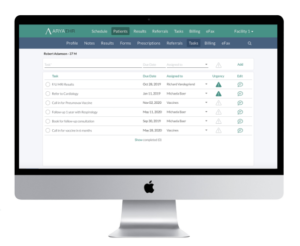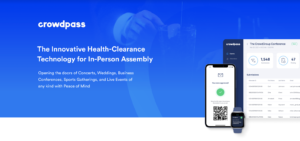HIPAA administrative safeguards manage the conduct of the workforce about protecting Protected Health Information (PHI).
They outline the procedures and policies healthcare providers and their business associates must implement to ensure PHI’s confidentiality, integrity, and security.
In this blog post, we will cover the key aspects of HIPAA administrative safeguards, including the importance of risk management, employee training, and the implementation of security policies.
Understanding HIPAA Administrative Safeguards
The U.S. Department of Health and Human Services (HHS) defines administrative safeguards as “administrative actions, and policies and procedures, to manage the selection, development, implementation, and maintenance of security measures to protect electronically protected health information (ePHI) and to manage the conduct of the covered entity’s workforce in relation to the protection of that information.”
Administrative safeguards of HIPAA’s security rule are divided into two segments:
- Standards – These are the high-level objectives outlined under the safeguard. They provide a general framework and goals covered entities must achieve to comply with HIPAA.
- Implementation Specifications – These are the actionable objectives necessary to meet the standard requirements. Implementation specifications are further categorized as required or addressable to offer flexibility and adaptability.
Effective implementation of HIPAA administrative safeguards is a collective responsibility spanning an entire organization. Key roles include:
- HIPAA Compliance Officer, Information Security Officer, or Privacy Officer: These appointed staff members primarily oversee, design, and enforce HIPAA administrative safeguards. They ensure that the organization’s policies and procedures align with HIPAA requirements.
- IT Department: They implement the technical aspects of these safeguards, such as access controls, data encryption, and secure data transmission protocols.
- Human Resources Department: HR departments are integral in managing the workforce-related elements of the safeguards, including conducting background checks, overseeing training programs, and ensuring that staff understand their responsibilities regarding ePHI.
- Training Teams: They are responsible for educating the workforce about HIPAA policies, the importance of ePHI security, and the specific actions employees must take to comply with these regulations.
- Department Managers: Managers across various departments must ensure their teams understand and adhere to HIPAA administrative standards.
Key Components of HIPAA Administrative Safeguards
Here, we’ll explore HIPAA Administrative safeguards components in detail, providing insights and examples for a clearer understanding.
1. Security Management Process
It involves establishing policies and procedures to prevent, detect, contain, and correct security violations. It forms the core of an entity’s security program, encompassing several key areas:
- Risk Analysis: A process to identify and evaluate risks to the security and privacy of ePHI. (Required)
- Risk Management: Finding and implementing measures to reduce risks to ePHI to acceptable levels. (Required)
- Sanction Policy: A set of rules that define penalties for employees who do not follow the organization’s ePHI security policies and procedures. (Required)
- Information System Activity Review: Regular checks of system logs and reports to monitor how ePHI is accessed and handled. (Required)
Examples:
- Regularly assessing IT systems for vulnerabilities.
- Implementing encryption and access controls.
- Enforcing penalties for security policy breaches.
- Periodically auditing system logs for unusual activities.
2. Assigned Security Responsibility
This component requires appointing a security official accountable for developing and executing the policies and procedures for handling ePHI.
While one person is designated as the primary security official, other organization members can also be assigned specific security-related tasks. However, the ultimate responsibility for ensuring compliance with the Security Rule lies with the appointed security official.
Examples:
- Regular training sessions for the security official on the latest HIPAA rules.
- Conducting periodic reviews of security policies within the organization.
- The security official liaises with IT to implement ePHI security measures.
3. Workforce Security
It involves ensuring appropriate ePHI access for staff and preventing unauthorized access.
- Authorization and/or Supervision: Implement procedures for authorizing and supervising employees who handle ePHI. Authorization involves determining if a user has the necessary permissions to perform certain activities, like accessing specific ePHI files. (Addressable)
- Workforce Clearance Procedure: Establish verification procedures to confirm that an employee’s access to ePHI is appropriate for their job function. This involves assessing whether the level of ePHI access granted aligns with their role and responsibilities. (Addressable)
- Termination Procedures: Implement procedures to terminate ePHI access when an employee leaves the organization, whether voluntarily or involuntarily. Access removal should be immediate upon the end of employment. (Addressable)
Examples:
- Implementing role-based access controls for ePHI.
- Conducting background checks before granting ePHI access.
- Regular audits of employee access levels to ePHI.
- Establishing a protocol for immediate access revocation upon employee termination.
4. Information Access Management
This standard focuses on authorizing and managing access to ePHI, ensuring secure and appropriate handling.
- Isolating Healthcare Clearinghouse Function: For healthcare clearinghouses that are part of a larger organization, there must be specific policies and procedures to prevent unauthorized access to the ePHI within the clearinghouse by the larger organization. (Required)
- Access Authorization: Policies and procedures must be adopted to access ePHI. For example, defining who can grant access and outlining the process. (Addressable)
- Access Establishment and Modification: Implement procedures for the initial granting and ongoing management of access rights to ePHI. This includes documenting, reviewing, and modifying a user’s access to workstations, transactions, programs, or processes based on the entity’s access authorization policies. (Addressable)
Examples:
- Segregating ePHI access for different departments.
- Regularly updating access rights based on job role changes.
- Implementing two-factor authentication for ePHI access.
- Conducting annual reviews of ePHI access permissions.
5. Security Awareness and Training
This standard mandates a security awareness and training program for all staff and management.
- Security Reminders: Periodic updates on new or revised security policies and changes in technology or the Security Rule. (Addressable)
- Protection from Malicious Software: Training on using security software to protect against malware and procedures to detect and report such threats. (Addressable)
- Login Monitoring: Tracking unsuccessful or inappropriate login attempts to detect potential unauthorized access. (Addressable)
- Password Management: Guidelines and training for creating, changing, and securing passwords, with regular password updates. (Addressable)
Examples:
- Annual cybersecurity training workshops for all employees.
- Regular updates and training on new phishing scam tactics.
6. Security Incident Procedures
According to this standard, covered entities must have procedures to identify and address suspected or known security incidents quickly. Steps should be taken to minimize the impact of security incidents as much as possible. It also involves the documentation of those incidents (Required).
Examples:
- Conducting mock drills for potential security breach scenarios.
- Establishing a clear protocol for reporting and escalating security incidents.
- Training staff on immediate steps to take in case of a suspected breach.
7. Contingency Plan
This plan involves policies and procedures for responding to ePHI emergencies.
- Data Backup Plan: Establish procedures to create and maintain retrievable exact copies of ePHI. Ensuring that data can be recovered and accessed during data loss is crucial. (Required)
- Disaster Recovery Plan: Develop and implement procedures to restore lost data during a disaster. This plan should be reviewed and tailored specifically to ensure the recovery of ePHI. (Required)
- Emergency Mode Operation Plan (Required): Procedures to continue critical business processes to protect ePHI security during emergencies. This involves ensuring that ePHI remains secure even in adverse conditions. (Required)
- Testing and Revision Procedure: Regularly test and update the contingency plans, including data backup, disaster recovery, and emergency operations plans. This ensures that the plans are effective and current. (Addressable)
- Applications and Data Criticality Analysis: Analyze the importance of various applications and data regarding patient care and business needs. (Addressable)
Examples:
- Regular backups of ePHI are needed to secure offsite locations.
- Developing and practicing a disaster recovery protocol.
- Testing emergency mode operations annually.
- Analyzing critical applications and data for emergency prioritization.
8. Evaluation
Covered entities must regularly evaluate and update their security measures to remain effective in changing operational environments. (Required)
Examples:
- Biannual technical evaluations of security measures.
- Reviewing and updating security policies in response to new IT deployments.
- Assessing the impact of operational changes on ePHI security.
- Compliance audits to ensure ongoing adherence to HIPAA standards.
9. Business Associate Arrangements
Covered entities must ensure that Business Associate Agreements (BAAs) are in place, confirming that all parties involved will adhere to HIPAA compliance standards for handling physical and electronic PII or PHI. (Required)
Examples:
- Establishing detailed ePHI security requirements in contracts with business associates.
- Conducting periodic compliance audits of business associates.
- Revising contracts to include new HIPAA requirements as they evolve.
- Implementing breach notification clauses in agreements with business associates.
HIPAA Administrative Safeguards Best Practices
Here are some practical tips for implementing and improving administrative safeguards within your organization:
- Conduct Regular Risk Assessments: Regularly evaluate your organization’s processes and systems to identify potential vulnerabilities in handling PHI (annually at least). Document these assessments and implement necessary changes.
- Employee Training: Untrained employees are your weakest link. Provide ongoing training to all employees about their roles and responsibilities under HIPAA. Make sure to include real-world scenarios and updates on any policy changes.
- Business Associate Management: Conduct due diligence to ensure business associates have adequate safeguards before sharing PHI. Establish clear contracts outlining their HIPAA obligations and data security practices.
- Use Exos by MedStack: Implement Exos by MedStack on your application to ensure adherence to HIPAA administrative safeguards. This platform can streamline the management of security policies, employee training, and workstation security.
- Documentation and Monitoring: Maintain records of policies, procedures, training, risk assessments, and incident reports. Monitor activity logs and audit systems to identify suspicious behavior and potential breaches.
Compliance and Enforcement
Here’s how to use HIPAA compliance to your advantage:
- Showcase Compliance Credentials: Proactively present your healthcare application’s compliance with HIPAA as a key selling point. Certifications and compliance seals can serve as trust signals to potential clients, showing that you prioritize data security and privacy.
- Leverage Compliance as a Value Proposition: Emphasize how your HIPAA-compliant application can streamline clients’ operations, reduce potential risk exposure, and simplify their compliance efforts.
- Customer Testimonials and Case Studies: Use success stories and testimonials from current clients to illustrate the practical benefits of your application’s compliance features. Highlight how these features have facilitated deal closures and added value to their businesses.
Conclusion
Do you want to keep your patient data safe with HIPAA administrative, physical, and technical safeguards? Choose MedStack and make compliance a breeze.
Our tool takes the hassle out of compliance so you can focus on what you do best. With MedStack, you get the policies, training, and security your app needs to meet HIPAA standards without the headache.
Get your digital health app HIPAA-ready with MedStack today!





